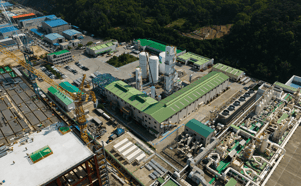Part 2 – Seamless Cylinders: The work-horse of the gases industry
Whilst pressure retention was the initial driving force behind safety considerations, the compatibility of the gas with the cylinder's internals is equally relevant in today's industry.
When only oxygen and nitrogen were the contained gases, steel cylinders were adequate; but as hydrogen, carbon monoxide (laser gases), and a host of special gases (used in the semiconductor industry) became widely used, steel has been in competition with aluminium alloys and a host of special materials (metallic and even non-metallic).
Since the Debor cylinder (Fig.1) made its first appearance in the early 20th century, gas containment has largely been in vessels resembling cylinders, viz. a long parallel length of material closed at one end, with a neck and shoulder at the other end capable of taking a valve. Cylinder range in size from tiny capsules of around 10 cubic centimetres water capacity, used in specialist breathing apparatus equipment, to huge double ended vessels on the backs of trailers, known as $quot;jumbo tubes$quot;, with water capacities up to 3000L, used for transporting hydrogen and helium in bulk quantities.
These are extreme examples and the majority of cylinders have between 10 and 50 litre water capacity.
In recent years, with increasing legislation concerning manual handling, the larger 50 litre cylinders are gradually being replaced with 10 to 20 litre counterparts with higher working pressures. Miniaturisation has also hit the gas cylinder industry.
... to continue reading you must be subscribed









